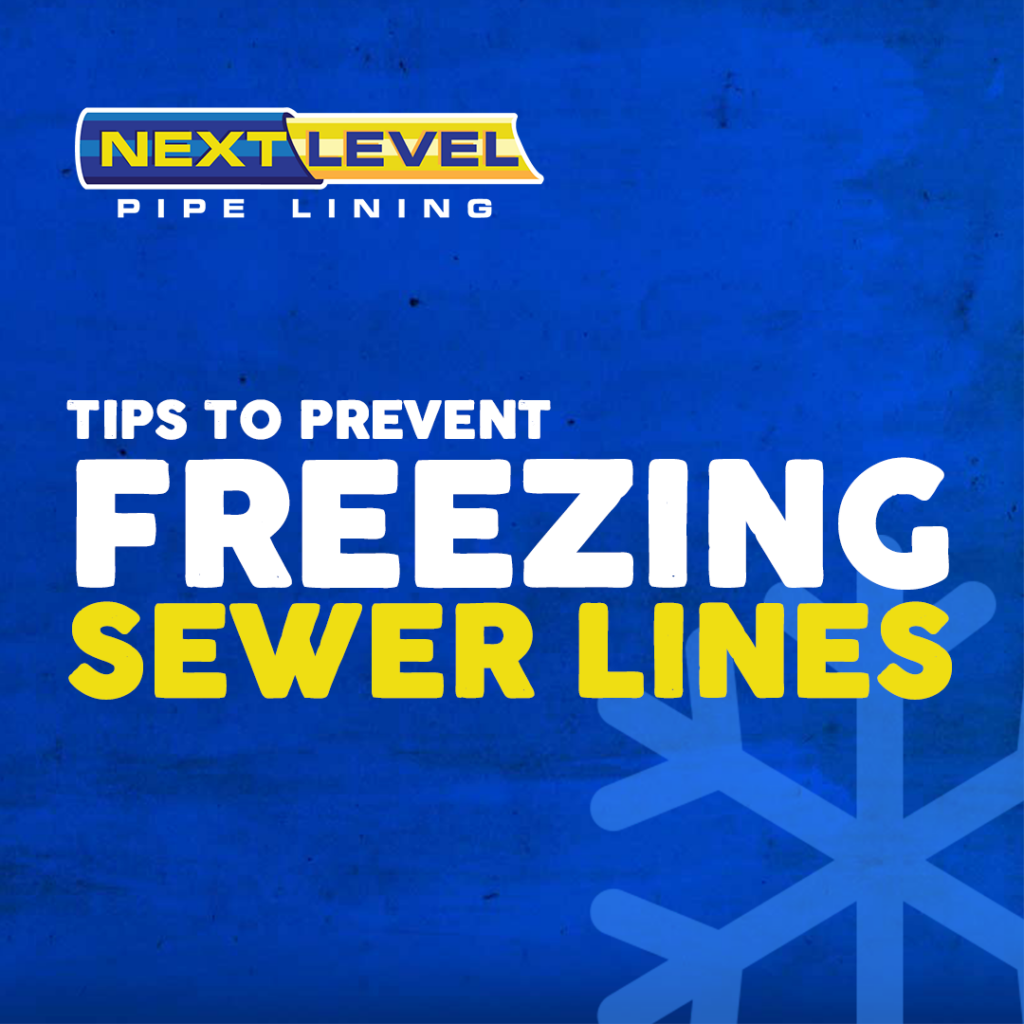Tips to Prevent Freezing Sewer Lines

For Drain Cleaning & Sewer Repair

Essential Tips to Prevent Freezing Sewer Lines This Winter
Winter’s low temperatures can wreak havoc on your plumbing — especially when it comes to freezing sewer lines. When pipes freeze, they can easily crack or burst, leading to costly water damage and significant property disruptions. In this blog post, we’ll explore preventive measures to help keep your sewer lines from freezing and offer guidance on what to do if you experience a burst pipe due to cold temperatures. We’ll also highlight the advantages of CCTV sewer inspections, sewer cleaning, and trenchless pipe lining to restore your system quickly and efficiently.
Understanding the Risks of Freezing Sewer Lines
Why Sewer Lines Freeze
Unlike water supply lines, which typically have some degree of insulation inside homes, sewer lines often run underground or through unheated spaces. During periods of extreme cold, these lines may accumulate ice blockages when wastewater doesn’t flow properly, or if there are existing clogs that slow drainage.
Consequences of Frozen Sewer Pipes
- Pipe Damage: When water freezes, it expands, putting undue pressure on pipe walls and joints. This can cause cracks or complete ruptures.
- Costly Repairs: A burst sewer pipe under your foundation, driveway, or yard can be expensive to excavate and repair if traditional methods are used.
- Health Hazards: Sewer backups can pose health concerns due to contaminated wastewater entering living spaces.
Top Tips to Prevent Freezing Sewer Lines
Insulate Vulnerable Areas
- Pipe Wrapping: Use foam insulation sleeves or thermal tape to wrap around pipes in unheated or exposed locations like crawl spaces or garages.
- Seal Cracks and Gaps: Check for any cracks in walls or gaps where cold air can reach pipes. Sealing these helps maintain a stable temperature around your plumbing.
Keep Water Moving
- Drip Taps: When temperatures plummet, let faucets drip slightly to keep water flowing. Though more commonly done for supply lines, a slight flow can also help prevent ice build-up in sewer lines.
- Regular Usage: Running water through toilets and sinks regularly can help prevent standing wastewater from freezing in the line.
Maintain Proper Landscaping
- Remove Debris: Keep fallen leaves, dirt, and other debris away from outdoor drains and vent openings to ensure continuous airflow and proper drainage.
- Mulch and Soil Insulation: Adding an extra layer of mulch or soil around shallow sewer lines can offer some insulation against freezing temperatures.
Schedule Regular Sewer Cleaning
A partially clogged or slow-draining sewer line is much more likely to freeze. Scheduling professional sewer cleaning prevents blockages from forming, ensuring wastewater flows smoothly even during cold snaps.
What to Do if You Have a Burst Pipe or Sewer Line Issue
Shut Off the Water Supply
If you suspect a burst pipe or notice flooding, locate your main water shut-off valve and turn it off immediately. This step can prevent further damage to your home or building.
Contact a Professional for a CCTV Sewer Inspection
A CCTV sewer inspection is a non-invasive method to pinpoint leaks, cracks, or blockages within your pipes. By inserting a high-resolution camera into your sewer line, technicians can accurately diagnose the issue without digging up your yard or flooring. This is especially useful if you’re unsure of the exact location or extent of the damage caused by freezing.
Explore Trenchless Repair Options (CIPP)
Traditional sewer repairs often involve excavating large portions of your property—disrupting landscaping, driveways, or even indoor spaces. However, Cured-In-Place Pipe (CIPP) lining offers a modern, trenchless solution that eliminates the need for extensive digging:
- Cleaning & Inspection: First, the damaged line is thoroughly cleaned, then inspected via CCTV to assess its condition.
- Liner Insertion: A flexible tube coated with a special resin is inserted into the existing pipe.
- Curing: The liner is then inflated and cured (hardened) in place, forming a seamless, durable “pipe within a pipe.”
- Result: Once hardened, the new liner is ready to handle wastewater flow, often with a lifespan of 50+ years.
Restore Normal Water Usage
After repairs are completed, you can safely restore your water supply. Be sure to ask your repair professional for any maintenance tips or follow-up inspections they recommend.
Why Trenchless Repairs Are a Game-Changer
Trenchless technology is revolutionizing the plumbing industry by minimizing property damage, reducing repair timelines, and often saving homeowners and businesses a significant amount of money. With CIPP, you avoid major excavation and gain:
- Minimal Disruption: No need to tear up floors, driveways, or landscaping.
- Long-Lasting Results: CIPP liners are highly durable and resistant to future root intrusion or cracks.
- Cost-Effective: Eliminates the need for large-scale reconstruction work.
- Environmentally Friendly: Less waste material and lower carbon footprint compared to traditional dig-and-replace methods.
Don’t Wait until your pipes are already frozen!
Freezing sewer lines can be a serious and costly winter problem, but proactive measures—like insulating pipes, keeping water flowing, and scheduling regular sewer cleaning—can help you avoid the worst. If you do encounter a burst pipe or suspect damage from the cold, remember that CCTV sewer inspections and CIPP trenchless repairs offer an efficient, less disruptive solution. By investing in these modern techniques, you can restore your sewer lines quickly and ensure your property stays protected for years to come.
Have more questions about freezing sewer line? Lets Talk!
Don’t let freezing temperatures catch you off guard—contact our team today to learn more about CCTV sewer inspections, professional cleaning services, and cutting-edge CIPP lining solutions. We’re here to help you keep your plumbing safe, operational, and ready to handle whatever winter throws your way.
Our Services
For Drain Cleaning & Sewer Repair
